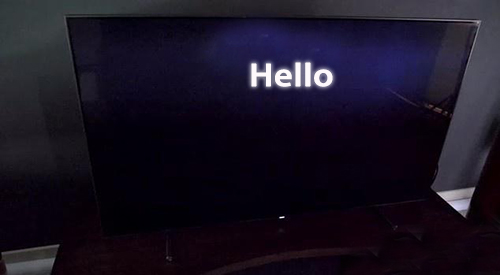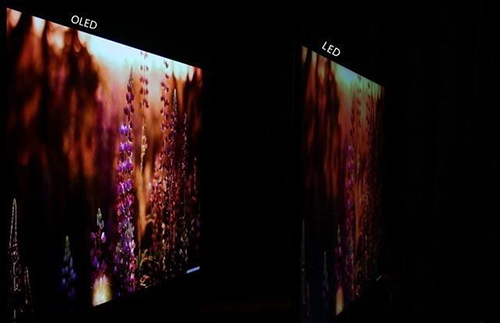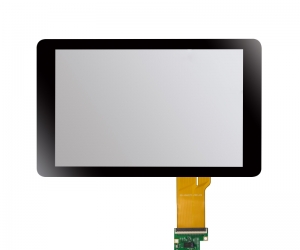News
News
Contrast: OLED screen can do infinity
From the perspective of contrast, the LED screen cannot be controlled for each pixel. When displaying black, it mainly relies on the deflection of the liquid crystal molecules to shield the backlight. Therefore, when the liquid panel displays a black screen, there will be some light leakage, and the ultimate black field cannot be obtained.
OLED technology can turn off independent pixels and zero their brightness. In theory, the contrast of OLED technology can be infinite.
In the actual display effect, the video content based on the dark scene is the biggest challenge of LED, and OLED can easily deal with it.
LED light leakage can not be avoided
It is impossible for OLEDs to leak light under the black field, thereby improving contrast and image quality. Therefore, for those who pursue the ultimate experience and sense of substitution, I am afraid that only OLED Screen can meet their needs.

Screen structure: OLED can be as thin as paper and fold freely
Compared with the complicated LED screen, OLED display technology eliminates the need of backlight support, so the LCD and backlight module is omitted. The structure is very simple, and the body can naturally reach the ultra-thin, It is possible to achieve a thickness of 1/3 of a conventional LED screen. In the future, OLED screens are expected to achieve a thickness of less than 1 mm, which is beyond the reach of LEDs.
OLEDs also have bendable properties that can be applied not only to television but also to the imaginative space of smart devices in the future.
Combined with the thin characteristics of OLED, the screen can be made as thin as a piece of paper and can be bent and folded at will, which is unthinkable in the LED era.
At present, LG Display, which has been working on OLED, shows us the curlable OLED screen. Let us see that OLED is not stopping the concept of “thin”, which is another revolution in the form of display products.
Response speed: LED screen working mode is bound to be unable to eradicate the phenomenon of image sticking
The response time of the screen usually refers to the speed at which each pixel of the TV reacts to the input signal, that is, the time required for the pixel to turn from dark to bright or from bright to dark. The shorter the time, the faster the screen response time, and the less likely it is to cause smear.
Due to the "innate difference" in the construction of LEDs and OLEDs, LED screens cannot fundamentally solve the image sticking phenomenon by any means or technology.
At present, the response time of the best LED TV is about 2ms. Therefore, the image sticking phenomenon of the LED screen is destined to "cannot be eradicated" and can only be avoided as much as possible.
In contrast, OLED TVs, because of the "self-illumination" attribute, can directly control the brightness of the pixel points. Therefore, the response speed of OLED is far superior to that of LED.
It is basically impossible for the naked eye to see the phenomenon of image sticking. In the performance of high-speed dynamic picture, OLED has a relatively large advantage.

Viewing angle: OLED can realize full-view angle display by nature
Each pixel of an OLED can be omnidirectionally illuminated like a light bulb. The LED screen relies on the deflection direction to control the light, which leads to the obvious problem of the viewing angle of the early LED screen. Later, relying on technological improvements, this problem was basically solved.
In addition, it is worth noting that because the OLED is self-illuminating, the wavelength is closer to natural light, and the damage to the human eye is less; and the LED screen will inevitably cause blue light damage to the eyes, although the short-term viewing effect is not large, If you have children aged 1-10 in your home, you need to control the time your child watches TV.
OLED technology brings us more exciting innovations and adds more fun to people's audio-visual life. It is for this reason that OLED technology is becoming the trend of the display era.
You may also like
 EN
EN








